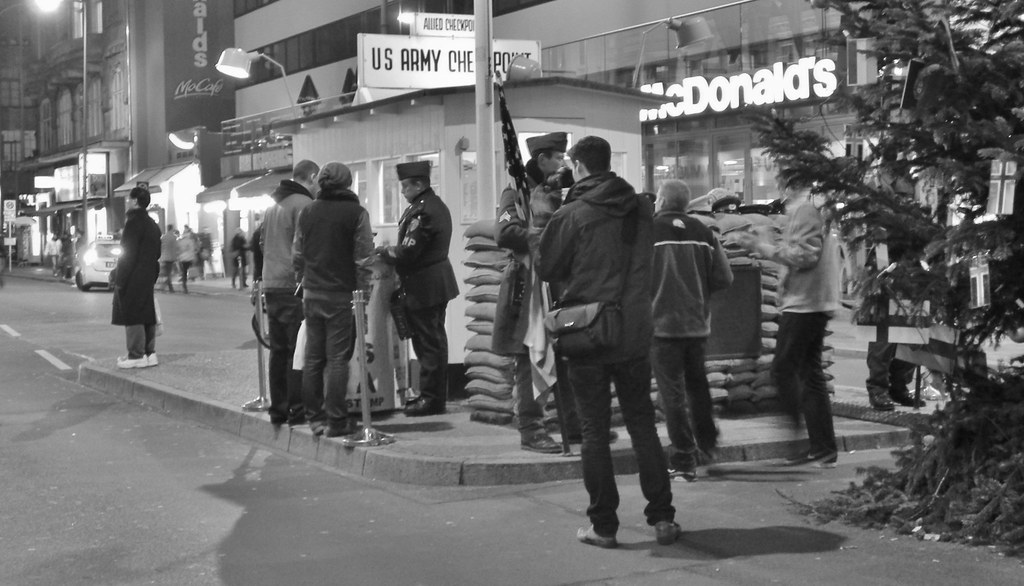
The story of Robert Philip Hanssen, an American Federal Bureau of Investigation (FBI) agent who spied for Soviet and Russian intelligence services against the United States from 1979 to 2001, represents one of the most profound betrayals in the annals of U.S. history. For over two decades, this seemingly unassuming figure systematically undermined national security, selling thousands of classified documents and compromising invaluable intelligence assets to America’s Cold War adversaries. His treachery was so extensive that the U.S. Department of Justice unequivocally described it as “possibly the worst intelligence disaster in U.S. history.”
Hanssen’s long and destructive career as a double agent unfolded with chilling precision, marked by periods of intense activity, calculated risks, and astonishing escapes from detection. He operated with a brazen anonymity, leveraging his deep institutional knowledge of the FBI’s counterintelligence operations against the very nation he swore to protect. The repercussions of his actions were devastating, leading to the executions of U.S. assets and the compromise of critical national defense strategies.
This in-depth exploration delves into the intricate layers of Hanssen’s life, from his early, unremarkable beginnings to the sophisticated espionage he masterminded, and the convoluted, often frustrating, mole hunt that eventually brought him down. We will examine the critical turning points, the alarming intelligence breaches, the missed opportunities for intervention, and the evolving nature of his betrayal, providing a comprehensive narrative of a man who lived a dangerous double life at the highest echelons of American power. The first section of our journey begins with Hanssen’s personal and professional origins, tracing his path into the federal service and his earliest ventures into treason.

1. **The Unremarkable Genesis of a Traitor: Hanssen’s Early Life and Entry into the FBI**Robert Philip Hanssen was born on April 18, 1944, in Chicago, Illinois, into a Lutheran family residing in the Norwood Park neighborhood. His father, Howard, who later passed away in 1993, was a Chicago police officer and was allegedly emotionally abusive to Hanssen throughout his childhood. This early familial environment may have subtly shaped the future traitor, though his motives would later be primarily financial.
Hanssen graduated from William Howard Taft High School in 1962, a seemingly ordinary young man embarking on a conventional academic path. He went on to attend Knox College in Galesburg, Illinois, where he pursued and earned a bachelor’s degree in chemistry in 1966. His initial post-college aspirations led him to apply for a cryptography job at the National Security Agency, but budget constraints unfortunately led to his rejection.
Undeterred, Hanssen enrolled in dental school at Northwestern University, a stark departure from his chemistry background. After three years, however, he shifted his academic focus once more, this time toward business. He successfully received an MBA in accounting and information systems in 1971, briefly taking a job with an accounting firm. His tenure there was short-lived, as he quit after just one year, signaling a restless professional disposition.
His career trajectory then took a significant turn when he joined the Chicago Police Department as an internal affairs investigator. In this role, Hanssen specialized in forensic accounting, a skill set that would prove ironically useful in his later double life. This experience provided him with an intimate understanding of investigations and financial irregularities, knowledge he would turn against his own country. In January 1976, Hanssen left the Chicago police force to join the Federal Bureau of Investigation (FBI), setting the stage for his unprecedented betrayal. During his time at Northwestern, Hanssen met Bernadette “Bonnie” Wauck, a staunch Roman Catholic, whom he married in 1968, converting from Lutheranism to Catholicism himself, a faith he would outwardly embrace even while committing acts of profound treachery.

2. **First Forays into Treachery: Hanssen’s Initial Contact with Soviet Intelligence (1979-1981)**Upon becoming a special agent on January 12, 1976, Robert Hanssen began his FBI career at the field office in Gary, Indiana. In 1978, with his family growing (eventually to include six children), he was transferred to the FBI’s field office in New York City. The following year, a pivotal assignment placed him in counterintelligence, where he was tasked with the critical responsibility of compiling a database of Soviet intelligence for the FBI. This position granted him direct access to highly sensitive information, laying the groundwork for his future espionage activities.
It was in 1979, just three years after joining the FBI, that Hanssen made his initial approach to the Soviet Main Intelligence Directorate (GRU), offering his services as a spy. He never articulated any political or ideological motivations for his actions. After his eventual capture, Hanssen explicitly told the FBI that “his only motivation was financial,” underscoring a mercenary drive rather than any deep-seated ideological conviction. This first cycle of espionage lasted until 1981.
During this initial period of betrayal, Hanssen provided the GRU with a significant volume of classified information. This included crucial details regarding the FBI’s bugging activities, which could severely compromise American surveillance efforts. He also furnished lists of suspected Soviet intelligence agents, handing over the identities of individuals the FBI was actively monitoring, effectively neutralizing years of painstaking counterintelligence work.
Perhaps Hanssen’s most grievous leak during this early phase was the betrayal of Dmitri Polyakov. Polyakov was a highly valued CIA informant who had risen to the rank of general in the Soviet Army, providing enormous amounts of information to U.S. intelligence. Following a separate betrayal by CIA mole Aldrich Ames in 1985, Polyakov was arrested in 1986 and subsequently executed in 1988. While Ames was officially blamed for compromising Polyakov, Hanssen’s earlier role in this devastating intelligence loss remained undisclosed until after his capture in 2001, highlighting the layered complexity of these intelligence disasters.

3. **A Resurgence of Deceit: Restarting Espionage in the Mid-80s and the Betrayal of Vital Assets**After his first espionage cycle concluded in 1981, Hanssen was transferred to FBI headquarters in Washington, D.C., relocating his family to Vienna, Virginia. His new role in the FBI’s budget office provided him with an unexpected advantage: access to information concerning a vast array of FBI operations. Crucially, this included all activities related to wiretapping and electronic surveillance, an area for which Hanssen became known as an expert within the bureau, a dangerous double-edged sword.
Three years later, Hanssen’s career path took him even deeper into the heart of counterintelligence, as he transferred to the FBI’s Soviet analytical unit. This unit was specifically responsible for the study, identification, and capture of Soviet spies and intelligence operatives working within the United States. Hanssen’s section was tasked with evaluating Soviet agents who volunteered to provide intelligence, determining their authenticity versus their potential as re-doubled agents. This position granted him unparalleled insight into American efforts to detect and neutralize spies, which he systematically used to protect himself and aid his handlers.
In 1985, Hanssen was again transferred to the FBI’s field office in New York City, where he continued his counterintelligence work against the Soviets. It was after this transfer, while on a business visit back to Washington, that he made the fateful decision to resume his espionage career. His self-imposed hiatus was over, and a more destructive phase of his betrayal was about to begin.
On October 1, 1985, Hanssen initiated this new phase by sending an anonymous letter to the KGB, formally offering his services once more and explicitly requesting $100,000 in cash, an amount equivalent to approximately $290,000 in 2024. In this damning letter, he provided the names of three KGB agents secretly working for the FBI: Boris Yuzhin, Valery Martinov, and Sergei Motorin. Although Hanssen was reportedly unaware of it at the time, Aldrich Ames had already exposed all three agents earlier that same year. Yuzhin, who had returned to Moscow in 1982, faced intensive investigation prior to Hanssen’s leak but was not arrested until both Ames and Hanssen exposed him. Martynov and Motorin were recalled to Moscow, where they were arrested, tried, convicted of espionage, and subsequently executed via gunshot to the back of the head. Yuzhin was imprisoned for six years before being released and immigrating to the U.S. Because the FBI initially attributed these catastrophic leaks solely to Ames, Hanssen remained beyond suspicion, allowing him to continue his active espionage period with impunity.

4. **The Devastating Compromise: Revealing U.S. Counterintelligence Secrets and the Embassy Tunnel**
In 1987, Robert Hanssen was recalled to Washington, D.C., and assigned a truly extraordinary task: he was charged with studying all known and rumored penetrations of the FBI to identify the individual who had betrayed Martynov and Motorin. In essence, Hanssen was tasked with searching for himself. With audacious cunning, he ensured that his study did not expose his own culpability. Moreover, in a breathtaking act of subversion, he delivered the entire study – including the list of all Soviets who had contacted the FBI regarding potential moles – directly to the KGB in 1988.
Later that same year, Hanssen committed what a government report later termed a “serious security breach” by revealing classified information to a Soviet defector during a debriefing. Agents working under him reported this incident to a supervisor, yet, remarkably, no action was taken. This pattern of overlooked warnings would become a recurring theme throughout Hanssen’s career, allowing his treason to persist and escalate.
In 1989, Hanssen dealt another significant blow to U.S. intelligence when he compromised an ongoing FBI investigation into Felix Bloch, a United States State Department official suspected of espionage. Hanssen warned the KGB that Bloch was under investigation, prompting the KGB to abruptly cease all contact with him. As a result, the FBI was unable to gather sufficient evidence, and Bloch was never formally charged with a crime, although the State Department later terminated his employment and denied him his pension. The failure of the Bloch investigation, and the FBI’s subsequent internal inquiry into how the KGB had been forewarned, intensified the mole hunt that would eventually, years later, lead to Hanssen’s arrest.
That same year, Hanssen provided the KGB with extensive classified information concerning U.S. planning for measurement and signature intelligence (MASINT). MASINT is a broad term encompassing intelligence gathered through various electronic means, such as radar, spy satellites, and signal intercepts. This leak severely jeopardized advanced American intelligence collection capabilities. A particularly dramatic betrayal occurred when Hanssen disclosed the existence of a highly sensitive FBI project: a multimillion-dollar eavesdropping tunnel built beneath the Soviet Embassy. This tunnel, constructed in 1977 beneath their decoding room, was intended for surveillance but had never been used due to fears of discovery. Hanssen revealed this critical secret to the Soviets in September 1989, receiving a payment of $55,000 the following month, an amount equivalent to $140,000 in 2024. He also, on at least two occasions, provided the Soviets with complete lists of American double agents, extinguishing years of carefully cultivated intelligence relationships and placing numerous lives at grave risk.

5. **Echoes of Warning: Unheeded Suspicions and Security Breaches within the Bureau**Despite Hanssen’s meticulously crafted facade and his ability to operate in the shadows, faint alarms did sound within the FBI at various points, though they were consistently dismissed or mishandled. In 1988, a “serious security breach” occurred when Hanssen disclosed secret information to a Soviet defector during a debriefing. This incident was not theoretical; it was observed and reported by agents working under him to their supervisor. Yet, inexplicably, no decisive action was taken, allowing a clear warning sign to fade into the bureaucratic background.
Two years later, in 1990, a more direct and personal warning emerged from Hanssen’s own family. His brother-in-law, Mark Wauck, who also happened to be an FBI employee, grew suspicious. Wauck’s sister, Bonnie (Hanssen’s wife), had confided in her sister, Jeanne Beglis, about finding a significant pile of cash on a dresser in the Hanssens’ house. Bonnie had also previously told her brother that Hanssen had once spoken about the possibility of retiring in Poland, which was then still part of the Eastern Bloc. Combining these unsettling details with the FBI’s known hunt for a mole, Wauck spoke with his supervisor, recommending an investigation into Hanssen. This crucial tip, coming from within both Hanssen’s family and the FBI, was, once again, regrettably ignored, and no action was taken.
These early, unheeded warnings are particularly poignant in the tragic narrative of Robert Hanssen. They underscore a critical vulnerability within the FBI’s internal security protocols and a profound institutional reluctance, or perhaps inability, to fully comprehend that such a destructive traitor could exist within its ranks. The repeated dismissal of credible suspicions effectively provided Hanssen with a shield, allowing him to continue his devastating espionage activities for many more years, inflicting untold damage on American intelligence.

6. **Post-Soviet Peril: Hanssen’s Reckless Behavior and Digital Intrusion After the USSR’s Collapse**
When the Soviet Union disbanded in December 1991, Hanssen, perhaps fearing exposure during the ensuing political upheaval, temporarily ceased communications with his Russian handlers. This break, however, proved to be brief. The following year, after the Russian Federation assumed control of the defunct Soviet spy agencies, Hanssen made an astonishingly risky and direct approach to the GRU, with whom he had not been in contact for ten months. He went in person to the Russian embassy, physically approaching a GRU officer in the parking garage, carrying a package of documents. He identified himself by his Soviet code name, “Ramon Garcia,” and described himself as a “disaffected FBI agent” offering his services. Remarkably, the Russian officer, evidently not recognizing the code name or the source, drove away, and the Russians subsequently filed an official protest with the U.S. State Department, believing Hanssen to be a triple agent. Despite openly showing his face, disclosing his code name, and revealing his FBI affiliation, Hanssen miraculously escaped arrest when the FBI’s investigation into the incident failed to progress.
Hanssen continued his pattern of reckless behavior in 1993, engaging in an act that bordered on audacious self-sabotage. He hacked into the computer of a fellow FBI agent, Ray Mislock. After extracting a classified document, Hanssen brazenly took it to Mislock, declaring, “You didn’t believe me that the system was insecure.” Hanssen’s superiors were far from amused and promptly initiated an investigation. In the end, they accepted his explanation that he was merely demonstrating flaws in the FBI’s security system, and Hanssen faced no significant repercussions. Mislock later theorized that Hanssen had likely accessed his computer to determine if his superiors were investigating him for espionage, inventing the document story as a cover.
In 1994, Hanssen expressed interest in a transfer to the newly formed National Counterintelligence Center, an entity designed to coordinate counterintelligence activities. However, upon learning that he would be required to take a lie detector test for the position, Hanssen abruptly changed his mind, a decision that would later be viewed as a clear indicator of his duplicity. Three years later, in 1997, convicted FBI mole Earl Edwin Pitts explicitly mentioned Hanssen’s name as a potential suspect, citing the Mislock incident. This marked the second time an FBI agent had directly identified Hanssen as a possible mole. Yet, once again, superiors remained unconvinced, and no investigative action was taken, allowing Hanssen’s shadow to persist unchallenged. This string of close calls and ignored warnings illustrates an astonishing pattern of luck and institutional blindness that shielded Hanssen for far too long.

7. **The Frustrated Search: The “Graysuit” Mole Hunt and Brian Kelley’s Ordeal**The existence of two Russian moles operating simultaneously within the U.S. security and intelligence establishment—Aldrich Ames at the CIA and Robert Hanssen at the FBI—significantly complicated American counterintelligence efforts throughout the 1990s. Ames was arrested in 1994, and his exposure provided explanations for many of the asset losses U.S. intelligence had suffered during the 1980s, including the arrests and executions of Martinov and Motorin. However, two critical cases—the compromised Felix Bloch investigation and the revelation of the embassy tunnel—remained stubbornly unsolved. Ames had been stationed in Rome during the Bloch investigation and did not work for the FBI, making it impossible for him to have known about these specific breaches. This glaring discrepancy strongly indicated the presence of another, as-yet-unidentified spy.
In response to this persistent threat, the FBI and CIA formed a joint mole-hunting team in 1994, code-naming their suspected spy “Graysuit.” The team diligently created a comprehensive list of all agents known to have had access to the compromised cases, embarking on a painstaking process of elimination. While their efforts did lead to the identification and arrest of other penetrations, such as CIA officer Harold James Nicholson in 1996, Hanssen himself managed to escape detection. This was likely due to the initial concentration of these investigative efforts predominantly on CIA agents rather than FBI agents, allowing Hanssen to continue his operations unseen within his own agency.
By 1998, using FBI criminal profiling techniques, the mole hunt tragically zeroed in on an innocent man: Brian Kelley, a CIA operative who had been involved in the Bloch investigation. Kelley and his family endured an intrusive and deeply unjust ordeal. His house was searched, his telephone tapped, and he and his family were placed under constant surveillance, followed everywhere they went. In November 1998, a chilling staged incident occurred when a man with a foreign accent appeared at Kelley’s door, warning him that the FBI knew he was a spy and instructing him to appear at a Metro station the next day to escape. Kelley, demonstrating his integrity, immediately reported the incident to the FBI, rather than complying with the presumed escape offer.
Despite his cooperation, the harassment continued. In 1999, the FBI subjected Kelley, his ex-wife, two sisters, and three children to intense interrogations, all of whom steadfastly denied any involvement. The false accusation persisted, and Brian Kelley was eventually placed on administrative leave, where he remained, his career and reputation unjustly tarnished, until the true culprit, Robert Hanssen, was finally arrested. Kelley’s ordeal stands as a stark testament to the immense pressures and potential for misdirection that plagued the FBI’s protracted and desperate search for the elusive “Graysuit.”

8. **The Critical Breakthrough: Identifying ‘Graysuit’ as Hanssen**The protracted hunt for ‘Graysuit’ finally found its target through a costly intelligence operation. After years of misdirection and the unjust ordeal of Brian Kelley, FBI investigators paid $7 million to Alexandr Shcherbakov, a disaffected KGB agent. Shcherbakov possessed invaluable files on moles operating within U.S. intelligence, offering a new path forward.
Among Shcherbakov’s cache was a file designated ‘B,’ which included an audiotape from July 21, 1986. This recording captured a conversation between ‘B’ and KGB agent Aleksander Fefelov. FBI agent Michael Waguespack found the voice eerily familiar, and further documents within the file contained a distinctive quote from George S. Patton’s speech, ‘the purple-pissing Japanese,’ a phrase FBI analyst Bob King recalled Hanssen using.
With this crucial lead, Waguespack revisited the audiotape, confirming the voice as Robert Hanssen’s. This revelation was the critical turning point. Investigators quickly matched Hanssen’s activities, dates, and compromised cases to his known movements and access. Forensic confirmation arrived when two fingerprints from a trash bag in the file were conclusively identified as Hanssen’s. The elusive ‘Graysuit’ finally had a name, and it belonged to one of their own.

9. **The Undercover Sting: Eric O’Neill and the PDA**With ‘Graysuit’ identified, the FBI launched a covert operation to apprehend Hanssen and limit further compromises. He was strategically promoted to oversee FBI computer security at headquarters, a position allowing close monitoring. This intricate sting involved assigning young FBI surveillance specialist Eric O’Neill as Hanssen’s assistant.
O’Neill’s ostensibly innocuous role provided unprecedented proximity. His primary mission was to observe Hanssen and gain access to any digital devices he used for espionage. O’Neill soon discovered Hanssen utilized a Palm III PDA, recognizing its critical importance for storing covert information.
Patiently awaiting an opportunity, O’Neill briefly obtained Hanssen’s PDA, allowing agents to swiftly download and decode its encrypted contents. The data extracted provided conclusive evidence, offering an undeniable digital trail that solidified Hanssen’s guilt and proved his long-standing betrayal. This technological breakthrough was instrumental in building the airtight case.

10. **The Final Dead Drop: Hanssen’s Capture at Foxstone Park**In his final days, Hanssen’s paranoia heightened. He sought a new job in early February 2001, perhaps sensing peril, and claimed to hear surveillance noises on his car radio, though FBI found no evidence. A letter to his Russian handlers, later recovered, revealed his unease, noting his promotion to a ‘do-nothing job’ and warning, ‘Something has aroused the sleeping tiger.’
Despite these suspicions, Hanssen’s ingrained espionage routine prevailed. On February 18, 2001, after an airport drop-off, he proceeded with one last, fateful dead drop at Virginia’s Foxstone Park. He placed a white tape on a park sign, signaling his contacts, then meticulously taped a sealed garbage bag of classified materials to a wooden footbridge.
FBI agents, who had tracked his every move, observed this incriminating act and immediately moved in. Upon arrest, Hanssen reportedly asked, ‘What took you so long?’ His capture ended over two decades of treason. The Justice Department announced his arrest on February 20, 2001, after a two-day wait confirmed no SVR handlers appeared.

11. **The Plea Bargain and Sentencing: Avoiding the Death Penalty**Following his dramatic arrest, Robert Hanssen faced federal prosecution. Represented by Washington, D.C., lawyer Plato Cacheris, Hanssen entered complex negotiations with authorities, as his crimes carried potential death penalty implications.
A pivotal plea bargain was struck: Hanssen would avoid the death penalty in exchange for his full cooperation. This agreement was crucial for the government to assess and mitigate damage from his unparalleled knowledge of compromised operations.
On July 6, 2001, in U.S. District Court, Hanssen pleaded guilty to 13 counts of espionage, one of attempted espionage, and one of conspiracy. His admissions formally concluded the criminal proceedings. Ten months later, on May 10, 2002, U.S. District Judge Claude Hilton sentenced him to 15 consecutive life terms without parole. Hanssen addressed the court, stating, ‘I apologize for my behavior. I am shamed by it. I have opened the door for calumny against my totally innocent wife and children. I have hurt so many deeply.’

12. **Life in Supermax: Hanssen’s Imprisonment and Death**Designated Federal Bureau of Prisons prisoner #48551-083, Hanssen began his sentence on July 17, 2002, at ADX Florence, a federal supermax prison in Florence, Colorado. Known as the ‘Alcatraz of the Rockies,’ this facility is for high-risk inmates, offering extreme control and security.
Within ADX Florence, Hanssen spent the remainder of his life in solitary confinement, isolated 23 hours a day. This measure was standard for inmates posing significant security risks, preventing contact with external threats. His days were rigidly routine and starkly contrasted with his intricate double life.
Hanssen’s incarceration lasted over two decades. On June 5, 2023, he was found unresponsive in his cell and pronounced dead after revival efforts failed. His autopsy confirmed colon cancer as the cause of death, bringing a quiet end to a life defined by profound secrets and devastating betrayal.

13. **The Masked Spy: Hanssen’s Covert Tradecraft and Risk-Taking**Robert Hanssen’s espionage was characterized by his refusal to reveal his true identity to Russian handlers, operating as ‘Ramon’ or ‘Ramon Garcia.’ The FBI believed the Russians never knew their source’s real name. This anonymity showcased his cunning, despite occasional reckless acts.
His primary method involved an old-fashioned dead drop system, where he and his contacts left packages in public, unobtrusive locations to minimize direct exposure. He controlled logistics, choosing his own sites rather than those suggested by his handler, Victor Cherkashin, enhancing his sense of security.
Hanssen also devised a unique numerical code for scheduling drops, adding six to the month, day, and time (e.g., January 6 at 1:00 p.m. became July 12 at 7:00 p.m.). This simple encryption added another layer of obfuscation. However, his audacity sometimes bordered on recklessness; he once suggested the KGB emulate Chicago’s Mayor Richard J. Daley, and even recommended recruiting his closest friend, an Army colonel, showing a chilling disregard for consequences.

14. **An Enduring Scar: Hanssen’s Legacy as America’s Worst Intelligence Disaster**Robert Hanssen’s twenty-two-year tenure as a double agent inflicted almost unimaginable damage on U.S. national security. The U.S. Department of Justice definitively labeled it ‘possibly the worst intelligence disaster in U.S. history.’ His systematic betrayal compromised an estimated six thousand classified documents, revealing U.S. nuclear war strategies, military weapon technologies, and intricate counterintelligence programs.
His simultaneous operation with CIA mole Aldrich Ames created a devastating synergy, leading to the exposure and tragic execution of numerous KGB agents working for the U.S. Among his most notorious breaches was revealing the multimillion-dollar eavesdropping tunnel beneath the Soviet Embassy. This clandestine project was rendered useless, costing immense resources and tactical advantage, and demonstrating the deadly, tangible consequences of his actions.
Hanssen’s infamous legacy permeates American culture, serving as a cautionary tale. His story is extensively documented in books like David Wise’s ‘Spy’ and Eric O’Neill’s ‘Gray Day,’ highlighting institutional failures. His betrayal has been dramatized in films like ‘Master Spy’ and ‘Breach,’ as well as numerous documentaries and podcasts. Hanssen’s name remains synonymous with treason, a chilling reminder of vulnerabilities even within fortified national security apparatuses.
The saga of Robert Hanssen stands as a chilling testament to the insidious nature of betrayal and the profound vulnerabilities that can exist even within the most robust national security frameworks. His journey from an ostensibly ordinary FBI agent to one of America’s most damaging traitors serves as a permanent, cautionary chapter in the history of intelligence. It underscores the critical importance of vigilance, not only against external threats but also against the internal corrosion that can stem from unchecked ambition, deceit, and a chilling disregard for the very nation one pledges to protect. The repercussions of his actions continue to resonate, shaping counterintelligence strategies and forever altering the perception of loyalty within the hallowed halls of federal service.



